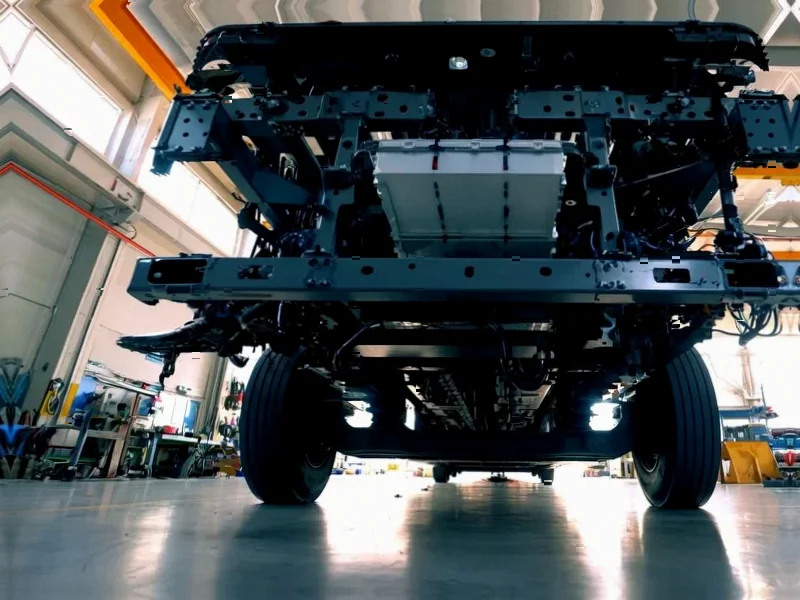According to DCD, power management company Eaton is acquiring Boyd Thermal from Goldman Sachs Asset Management for $9.5 billion, with the transaction expected to close in the second quarter of 2026. The acquisition brings Eaton Boyd’s data center cooling portfolio, including cold plates, cooling distribution units (CDUs), and immersion cooling systems, with Boyd Thermal forecasting $1.7 billion in 2026 sales, of which $1.5 billion comes from liquid cooling. Eaton CEO Paulo Ruiz stated that combining Boyd’s “highly-engineered liquid cooling technology” with Eaton’s existing products will help customers manage increasing power demands, particularly in data centers where power requirements are escalating dramatically. Boyd Thermal CEO Doug Britt emphasized that their decades of liquid cooling expertise combined with Eaton’s power management capabilities will address the high-power demand of AI data centers, with Boyd’s 5,000+ employees across North America, Asia, and Europe joining Eaton’s operations. This massive acquisition signals a fundamental shift in how power and cooling are being integrated for next-generation computing demands.
The AI Power Crisis Drives Consolidation
Eaton’s move represents the largest single bet on liquid cooling infrastructure to date, reflecting the existential crisis facing data center operators as AI workloads push power densities beyond what air cooling can handle. Modern AI clusters from companies like Nvidia are consuming 50-100kW per rack, with some configurations approaching 120kW – densities that make traditional cooling methods completely inadequate. The timing is critical: data center operators are facing power constraints in virtually every major market, from Northern Virginia to Singapore, where available capacity cannot support the projected growth of AI workloads without radical improvements in cooling efficiency. Eaton is essentially betting that the future of high-performance computing requires integrated power and cooling solutions rather than separate systems managed by different vendors.
Integration Challenges and Cultural Clashes
The $9.5 billion price tag raises immediate questions about integration risks between a century-old power management company and a specialized thermal engineering firm. Eaton, founded in 1911, operates in the conservative electrical equipment industry with long product cycles and rigorous safety standards, while Boyd’s thermal division serves fast-moving markets like AI infrastructure where innovation cycles measure in months rather than years. History is littered with examples of large industrial companies struggling to integrate specialized technology firms – consider General Electric’s challenges with various acquisitions or Siemens’ mixed results with technology integrations. The cultural mismatch could slow innovation just as the liquid cooling market is accelerating, potentially allowing more agile startups to capture market share while Eaton navigates internal integration.
Market Timing and Valuation Concerns
At nearly 6 times projected 2026 revenue, Eaton is paying a premium that assumes continued explosive growth in liquid cooling adoption. While the AI-driven demand is real, the timing raises concerns about market cyclicality and technology evolution. Liquid cooling technologies are still rapidly evolving, with debates ongoing about whether cold plate, immersion, or direct-to-chip solutions will dominate different market segments. The acquisition also comes as numerous competitors are entering the space, from established players like Vertiv and Schneider Electric to specialized startups, suggesting potential price compression as competition intensifies. If adoption rates slow or alternative cooling technologies emerge, Eaton could find itself having overpaid for technology that becomes commoditized faster than expected.
The Regulatory and Execution Hurdles
The lengthy closing timeline – not expected until Q2 2026 – creates significant execution risk in a market moving at AI speed. During this nearly two-year period, Boyd Thermal will operate in limbo while competitors aggressively pursue customers who may be hesitant to commit to technology from a company in transition. Regulatory approvals across multiple jurisdictions could also complicate the process, particularly given increasing scrutiny of major industrial acquisitions. More fundamentally, the scale of integration – combining 5,000 employees across three continents with different corporate cultures, compensation structures, and operational processes – represents a massive management challenge that could distract from the innovation needed to stay competitive.
Strategic Implications for the Industry
This acquisition signals the beginning of consolidation in the data center thermal management space and will likely trigger responses from competitors. Companies like Schneider Electric and Vertiv now face pressure to either develop their own integrated solutions or pursue acquisitions of remaining independent cooling specialists. For data center operators, the trend toward integrated power and cooling solutions could simplify procurement but also reduce flexibility in mixing and matching best-of-breed components. The deal also validates that liquid cooling is moving from niche high-performance computing applications to mainstream data center infrastructure, potentially accelerating adoption across the industry as major players commit significant capital to the technology’s development.




